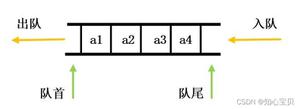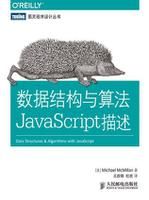算法与数据结构综合提升C++版

download:数据结构" title="算法与数据结构">算法与数据结构-综合提升 C++版
任何时候学习算法都不晚,而且越早越好,这么多年,你听说过技术过时,什么时候听说过算法过时,不仅没有过时,因为机器学习、大数据的要求,算法变得越来越重要了
现在开始,补足算法知识
适合具备以下技术储备要求的所有对算法感兴趣的在校学生或已工作的开发人员,如果你想在短时间
内应对面试、升职测评等艰巨任务,强烈建议你学习本课程的同时,学习《玩转算法面试》课程,两
门课程一起学习,你将会在数据结构和程序设计上均有所提高
技术储备要求:
1.具备基本编程思想2.了解c++基本语法或Java基本语法3.对基础的线性数据结构和基础的算法内容有所认识
import random
2 if name =="main": #四位數字字母考證码的生成
3 checkcode="" #保管考證码的變量
4 for i in range(4):
5 index=random.randrange(0,4) #生成一個0~3中的數
6 if index!=i and index +1 !=i:
7 checkcode +=chr(random.randint(97,122)) # 生成a~z中的一個小寫字母
8 elif index +1==i:
9 checkcode +=chr(random.randint(65,90) ) # 生成A~Z中的一個大寫字母
10 else:
11 checkcode +=str(random.randint(1,9)) # 數字1-9
12 print(checkcode)
復製代码
輸出爲:m47A、8wQ9、vugS
2。格式化時間函數
1 def formatTime(longtime):
2 '''格式化時間的函數'''
3 import time
4 return time.strftime("%Y-%m-%d %H:%M:%S",time.localtime(longtime))
3。記载顯現登錄日誌實例
復製代码
import time
def show_info():
print('''輸入提示數字,執行相應操作
0:退出
1:查看登錄日誌
''')
def write_loginfo(username):
"""
將用戶名和登錄時間寫入日誌
:param username: 用戶名
"""
with open('log.txt','a') as f:
string = "用戶名:{} 登錄時間:{}\n".format(username ,time.strftime('%Y-%m-%d %H:%M:%S',time.localtime(time.time())))
f.write(string)
def read_loginfo():
"""
讀取日誌
"""
with open('log.txt','r') as f:
while True:
line = f.readline()
if line == '':
break # 跳出循環
print(line) # 輸出一行内容
if name == "main":
輸入用戶名
username = input('請輸入用戶名:')# 檢測用戶名
while len(username) < 2 :
print('用戶名長度應不少於2位')
username = input('請輸入用戶名:')
# 輸入密码
password = input('請輸入密码:')
# 檢測密码
while len(passw ord) < 6 :
print('密码長度應不少於6位')
password = input('請輸入密码:')
print('登錄勝利')
write_loginfo(username) # 寫入日誌
show_info() # 提示信息
num = int(input('輸入操作數字:')) # 輸入數字
while True:
if num == 0:
print('退出勝利')
break
elif num == 1:
print('查看登錄日誌')
read_loginfo()
show_info()
num = int(input('輸入操作數字:'))
else:
print('您輸入的數字有誤')
show_info()
num = int(input('輸入操作數字:'))
3。模仿淘寶客服自動回復
復製代码
1 # 任務2:模仿淘寶客服自動回復
2
3 def find_answer(question):
4 with open('reply.txt','r') as f :
5 while True:
6 line=f.readline()
7 if not line: #也能夠爲if line==''
8 break
9 keyword=line.split('|')[0]
10 reply=line.split('|')[1]
11 if keyword in question:
12 return reply
13 return '對不起,沒有妳想要找的問題'
14
15 if name =='main':
16 question=input('請輸入想要發問的内容:')
17 while True:
18 if question=='bye':
19 break
20 reply=find_answer(question)
21 if not reply:
22 question=input("小蜜不懂您在說什麼,您能夠問一些與订單、账戶和支付相關的内容(退出請輸入bye):")
23 else:
24 print(reply)
25 question=input("您能夠問一些與订單、账戶和支付相關的内容(退出請輸入bye):")
26 print('谢谢,再見!')
27
復製代码
復製代码
4。求最大條約數和最小公倍數 (辗轉相除法)
最大條約數:指兩個或多個整數共有約數中最大的一個
最小公倍數:兩個或多個整數公有的倍數叫做它們的公倍數,其中除0以外最小的一個公倍數就叫做這幾個整數的最小公倍數
二者關係:兩個數之積=最小公倍數*最大條約數
復製代码
1 a=int(input('輸入數字1:'))
2 b=int(input('輸入數字2:'))
3 s=a*b
4 while a%b!=0:
5 a,b=b,(a%b)
6 print(a)
7 print(b)
8 else:
9 print(b,'is the maximum common divisor最大條約數')
10 print(s//b,'is the least common multiple,最小公倍數')
復製代码
更相減损法
復製代码
1 a=int(input('please enter 1st num:'))
2 b=int(input('please enter 2nd num:'))
3 s=a*b
4
5 while a!=b:
6 if a>b:
7 a-=b
8 elif a<b:
9 b-=a
10 else:
11 print(a,'is the maximum common divisor')
12 print(s//a,'is the least common multiple')
13
14 #運轉結果
15 please enter 1st num:40
16 please enter 2nd num:60
17 20 is the maximum common divisor
18 120 is the least common multiple
復製代码
5。判別能否爲闰年 (辗轉相除法)
復製代码
1 # 判別能否爲闰年
2 while True:
3 try:
4 num=eval(input("請輸入一個年份:"))
5 except:
6 print('輸入錯誤年份')
7 continue
8 if (num %4==0 and num%100 !=0) or num %400==0:
9 print(num,"是闰年")
10 else:
11 print(num,"不是闰年")
復製代码
復製代码
import calendar
year = int(input("請輸入年份:"))
check_year=calendar.isleap(year)
if check_year == True:
print ("闰年")
else:
print ("闰年")
復製代码
6。Python統計字符串中數字,字母,漢字的個數
復製代码
1 import re
2 str_test='abcdefgHABC123456中華民族'
3
4 #把正則表達式編译成對象,假如經常運用該對象,此種方式可進步一定效率
5 num_regex = re.compile(r'[0-9]')
6 zimu_regex = re.compile(r'[a-zA-z]')
7 hanzi_regex = re.compile(r'[\u4E00-\u9FA5]')
8
9 print('輸入字符串:',str_test)
10 #findall獲取字符串中一切匹配的字符
11 num_list = num_regex.findall(str_test)
12 print('包含的數字:',num_list)
13 zimu_list = zimu_regex.findall(str_test)
14 print('包含的字母:',zimu_list)
15 hanzi_list = hanzi_regex.findall(str_test)
16 print('包含的漢字:',hanzi_list)
復製代码
#羊車門問題
復製代码
1 import random as r
2
3 #總次數
4 total=1000000 #1000,1W,10W,100W
5 #換與不換的獲勝次數
6 win1=0
7 win2=0
8
9 for i in range(total):
10 #模仿選择過程
11 man=r.randint(1,3)
12 car=r.randint(1,3)
13 #結果:一開端爲車門,不換+1.
14 # 否則則一開端爲羊門,換+1.
15 if man==car:
16 win1+=1
17 else:
18 win2+=1
19
20 print("在{}次實驗中:".format(total))
21 print("若不更改門,獲勝概率爲{:.3}%.".format((win1/total)100))
22 print("若更改門,獲勝概率爲{:.3}%.".format((win2/total)100))
復製代码
復製代码
1 import random
2 x=random.randint(5000,10000)
3 print(x)
4 change=0
5 nochange=0
6 for i in range(1,x+1):
7 a=random.randrange(1,4)
8 b=random.randrange(1,4)
9 if a==b:
10 nochange=nochange+1
11 else:
12 change=change+1
13 print("不更改組择得到汽車的概率爲{:.2f}".format(nochange/x))
14
15 print("更改組择得到汽車的概率爲{:.2f}".format(change/x))
以上是 算法与数据结构综合提升C++版 的全部内容, 来源链接: utcz.com/z/508996.html







